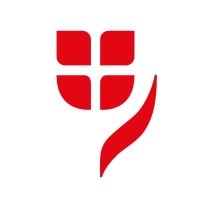
Vienna Insurance Group (VIG) Company Cyber Security Posture
group.vigVienna Insurance Group (VIG) is the leading insurance group in the entire Central and Eastern European (CEE) region. More than 50 insurance companies and pension funds in 30 countries form a Group with a long-standing tradition, strong brands and close customer relations. Around 30,000 employees in the VIG take care of the day-to-day needs of around 33 million customers. VIG shares have been listed on the Vienna Stock Exchange since 1994, on the Prague Stock Exchange since 2008 and on the Budapest Stock Exchange since 2022. The VIG Group has an A+ rating with stable outlook by the internationally recognised rating agency Standard & Poor’s. VIG cooperates closely with the Erste Group, the largest retail bank in Central and Eastern Europe. VIG Social Media Netiquette: http://bit.ly/VIG_Netiquette
VIG( Company Details
vienna-insurance-group
13903 employees
23979.0
524
Insurance
group.vig
Scan still pending
VIE_9453467
In-progress
Between 900 and 1000
This score is AI-generated and less favored by cyber insurers, who prefer the TPRM score.
 VIG( Global Score
VIG( Global Score.png)

Vienna Insurance Group (VIG) Company Scoring based on AI Models
| Model Name | Date | Description | Current Score Difference | Score |
|---|---|---|---|---|
| AVERAGE-Industry | 03-12-2025 | This score represents the average cybersecurity rating of companies already scanned within the same industry. It provides a benchmark to compare an individual company's security posture against its industry peers. | N/A | Between 900 and 1000 |
Vienna Insurance Group (VIG) Company Cyber Security News & History
| Entity | Type | Severity | Impact | Seen | Url ID | Details | View |
|---|
Vienna Insurance Group (VIG) Company Subsidiaries

Vienna Insurance Group (VIG) is the leading insurance group in the entire Central and Eastern European (CEE) region. More than 50 insurance companies and pension funds in 30 countries form a Group with a long-standing tradition, strong brands and close customer relations. Around 30,000 employees in the VIG take care of the day-to-day needs of around 33 million customers. VIG shares have been listed on the Vienna Stock Exchange since 1994, on the Prague Stock Exchange since 2008 and on the Budapest Stock Exchange since 2022. The VIG Group has an A+ rating with stable outlook by the internationally recognised rating agency Standard & Poor’s. VIG cooperates closely with the Erste Group, the largest retail bank in Central and Eastern Europe. VIG Social Media Netiquette: http://bit.ly/VIG_Netiquette
Access Data Using Our API

Get company history
.png)
VIG( Cyber Security News
Vienna Insurance Group Launches Specialist Cyber Security Company
VIG said cyber attacks have become a key issue for businesses and represent one of the greatest challenges of our time. According to the World ...
VIG establishes specialist cyber security firm, CyRiSo
VIG establishes specialist cyber security firm, CyRiSo · Share this: · Recent Reinsurance News · Getting your daily reinsurance news from ...
VIG launches CyRiSo
A really good email covering top news. Leave this field empty if you're human: Related Posts. image. Investments · VIG acquires stake in Polish ...
VIG establishes EU-funded cyber security programme to combat rising threats
Protecting customer data and securing IT systems is a top priority for VIG. To meet the latest security requirements, the company has ...
Vienna Insurance Group AG (WBO:VIG) Q1 2025 Earnings Call Highlights: Strong Revenue Growth and ...
Vienna Insurance Group AG (WBO:VIG) reports robust financial performance with an 8.1% increase in insurance service revenue and strategic ...
Vienna Insurance Group picks 48.82% stake in Phinance
Phinance is known for insurance sales, financial consulting, and the distribution of investment and credit products. The transaction has ...
Aegon sells Hungarian arm to VIG, acts to cut debt
Following the debt tender offer, Aegon expects to have reduced its gross financial leverage to 5-5.5 billion euros. ($1 = 0.9089 euros).
Vienna Insurance Group pre-tax profit rises 7.5% in Q1 2025
Vienna Insurance Group has reported profit before taxes of €261.1m for the first quarter of 2025, an increase of 7.5% compared to last year.
Vienna Insurance bids for 80% stake in Moldasig
“The attractiveness of Moldova's economy has grown steadily. With the planned investment we express our trust in Moldova's EU accession path and ...

VIG( Similar Companies
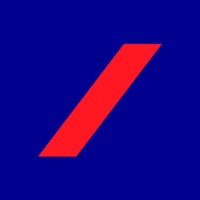
AXA
As one of the largest global insurers, our purpose is to act for human progress by protecting what matters. Protection has always been at the core of our business, helping individuals, businesses and societies to thrive. And AXA has always been a leader, an innovator, an entrepreneurial company, fo

AAA-The Auto Club Group
AAA - The Auto Club Group (ACG) is the second largest AAA club in North America, serving more than 13+ million members across 14 U.S. states, the province of Quebec, Puerto Rico, and the U.S. Virgin Islands. For over 100 years, AAA has provided safety, security, and peace of mind. ACG advances AAA’
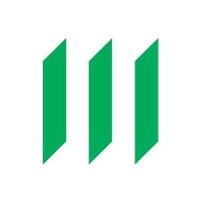
Manulife
Manulife is a leading international financial services group that helps people make their decisions easier and lives better. With our global headquarters in Toronto, we operate as Manulife across our offices in Canada, Asia, and Europe, and primarily as John Hancock in the United States. We have mor

Rosgosstrakh
RGS operates nationwide with over 2,500 branches, agencies and over 400 claims-handling offices covering every one of Russia's 86 regions - from Kaliningrad on the Baltic Sea in the West to Kamchatka on the Pacific Ocean in the Far East, and from Murmansk on the Barents Sea to Sochi (2014 Winter Oly
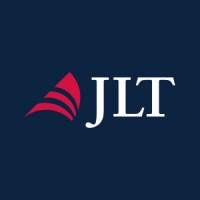
JLT Asia
As of 1 April, 2019, JLT Asia is now a part of Marsh & McLennan Companies (MMC). This account will now be managed by Marsh. We believe clients will benefit from access to broader talent, deeper risk expertise and specialty capabilities, broader geographic reach, and more capacity in digital, data,
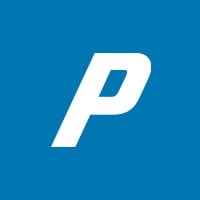
Progressive Insurance
Reality check: Most people don’t grow up dreaming about a job in insurance. We certainly didn’t, but then we got here and realized Progressive is different—in a good way. We strive to create a fun and flexible work environment for everyone where employees are encouraged to risk, learn, and grow. Wit

Frequently Asked Questions (FAQ) on Cybersecurity Incidents
VIG( CyberSecurity History Information
Total Incidents: According to Rankiteo, VIG( has faced 0 incidents in the past.
Incident Types: As of the current reporting period, VIG( has not encountered any cybersecurity incidents.
Total Financial Loss: The total financial loss from these incidents is estimated to be {total_financial_loss}.
Cybersecurity Posture: The company's overall cybersecurity posture is described as Vienna Insurance Group (VIG) is the leading insurance group in the entire Central and Eastern European (CEE) region. More than 50 insurance companies and pension funds in 30 countries form a Group with a long-standing tradition, strong brands and close customer relations. Around 30,000 employees in the VIG take care of the day-to-day needs of around 33 million customers. VIG shares have been listed on the Vienna Stock Exchange since 1994, on the Prague Stock Exchange since 2008 and on the Budapest Stock Exchange since 2022. The VIG Group has an A+ rating with stable outlook by the internationally recognised rating agency Standard & Poor’s. VIG cooperates closely with the Erste Group, the largest retail bank in Central and Eastern Europe. VIG Social Media Netiquette: http://bit.ly/VIG_Netiquette.
Detection and Response: The company detects and responds to cybersecurity incidents through {description_of_detection_and_response_process}.
Incident Details
Incident 1: Ransomware Attack
Title: {Incident_Title}
Description: {Brief_description_of_the_incident}
Date Detected: {Detection_Date}
Date Publicly Disclosed: {Disclosure_Date}
Date Resolved: {Resolution_Date}
Type: {Type_of_Attack}
Attack Vector: {Attack_Vector}
Vulnerability Exploited: {Vulnerability}
Threat Actor: {Threat_Actor}
Motivation: {Motivation}
Incident 2: Data Breach
Title: {Incident_Title}
Description: {Brief_description_of_the_incident}
Date Detected: {Detection_Date}
Date Publicly Disclosed: {Disclosure_Date}
Date Resolved: {Resolution_Date}
Type: {Type_of_Attack}
Attack Vector: {Attack_Vector}
Vulnerability Exploited: {Vulnerability}
Threat Actor: {Threat_Actor}
Motivation: {Motivation}
Common Attack Types: As of now, the company has not encountered any reported incidents involving common cyberattacks.
Identification of Attack Vectors: The company identifies the attack vectors used in incidents through {description_of_identification_process}.
Impact of the Incidents
Incident 1: Ransomware Attack
Financial Loss: {Financial_Loss}
Data Compromised: {Data_Compromised}
Systems Affected: {Systems_Affected}
Downtime: {Downtime}
Operational Impact: {Operational_Impact}
Conversion Rate Impact: {Conversion_Rate_Impact}
Revenue Loss: {Revenue_Loss}
Customer Complaints: {Customer_Complaints}
Brand Reputation Impact: {Brand_Reputation_Impact}
Legal Liabilities: {Legal_Liabilities}
Identity Theft Risk: {Identity_Theft_Risk}
Payment Information Risk: {Payment_Information_Risk}
Incident 2: Data Breach
Financial Loss: {Financial_Loss}
Data Compromised: {Data_Compromised}
Systems Affected: {Systems_Affected}
Downtime: {Downtime}
Operational Impact: {Operational_Impact}
Conversion Rate Impact: {Conversion_Rate_Impact}
Revenue Loss: {Revenue_Loss}
Customer Complaints: {Customer_Complaints}
Brand Reputation Impact: {Brand_Reputation_Impact}
Legal Liabilities: {Legal_Liabilities}
Identity Theft Risk: {Identity_Theft_Risk}
Payment Information Risk: {Payment_Information_Risk}
Average Financial Loss: The average financial loss per incident is {average_financial_loss}.
Commonly Compromised Data Types: The types of data most commonly compromised in incidents are {list_of_commonly_compromised_data_types}.
Incident 1: Ransomware Attack
Entity Name: {Entity_Name}
Entity Type: {Entity_Type}
Industry: {Industry}
Location: {Location}
Size: {Size}
Customers Affected: {Customers_Affected}
Incident 2: Data Breach
Entity Name: {Entity_Name}
Entity Type: {Entity_Type}
Industry: {Industry}
Location: {Location}
Size: {Size}
Customers Affected: {Customers_Affected}
Response to the Incidents
Incident 1: Ransomware Attack
Incident Response Plan Activated: {Yes/No}
Third Party Assistance: {Yes/No}
Law Enforcement Notified: {Yes/No}
Containment Measures: {Containment_Measures}
Remediation Measures: {Remediation_Measures}
Recovery Measures: {Recovery_Measures}
Communication Strategy: {Communication_Strategy}
Adaptive Behavioral WAF: {Adaptive_Behavioral_WAF}
On-Demand Scrubbing Services: {On_Demand_Scrubbing_Services}
Network Segmentation: {Network_Segmentation}
Enhanced Monitoring: {Enhanced_Monitoring}
Incident 2: Data Breach
Incident Response Plan Activated: {Yes/No}
Third Party Assistance: {Yes/No}
Law Enforcement Notified: {Yes/No}
Containment Measures: {Containment_Measures}
Remediation Measures: {Remediation_Measures}
Recovery Measures: {Recovery_Measures}
Communication Strategy: {Communication_Strategy}
Adaptive Behavioral WAF: {Adaptive_Behavioral_WAF}
On-Demand Scrubbing Services: {On_Demand_Scrubbing_Services}
Network Segmentation: {Network_Segmentation}
Enhanced Monitoring: {Enhanced_Monitoring}
Incident Response Plan: The company's incident response plan is described as {description_of_incident_response_plan}.
Third-Party Assistance: The company involves third-party assistance in incident response through {description_of_third_party_involvement}.
Data Breach Information
Incident 2: Data Breach
Type of Data Compromised: {Type_of_Data}
Number of Records Exposed: {Number_of_Records}
Sensitivity of Data: {Sensitivity_of_Data}
Data Exfiltration: {Yes/No}
Data Encryption: {Yes/No}
File Types Exposed: {File_Types}
Personally Identifiable Information: {Yes/No}
Prevention of Data Exfiltration: The company takes the following measures to prevent data exfiltration: {description_of_prevention_measures}.
Handling of PII Incidents: The company handles incidents involving personally identifiable information (PII) through {description_of_handling_process}.
Ransomware Information
Incident 1: Ransomware Attack
Ransom Demanded: {Ransom_Amount}
Ransom Paid: {Ransom_Paid}
Ransomware Strain: {Ransomware_Strain}
Data Encryption: {Yes/No}
Data Exfiltration: {Yes/No}
Ransom Payment Policy: The company's policy on paying ransoms in ransomware incidents is described as {description_of_ransom_payment_policy}.
Data Recovery from Ransomware: The company recovers data encrypted by ransomware through {description_of_data_recovery_process}.
Regulatory Compliance
Incident 1: Ransomware Attack
Regulations Violated: {Regulations_Violated}
Fines Imposed: {Fines_Imposed}
Legal Actions: {Legal_Actions}
Regulatory Notifications: {Regulatory_Notifications}
Incident 2: Data Breach
Regulations Violated: {Regulations_Violated}
Fines Imposed: {Fines_Imposed}
Legal Actions: {Legal_Actions}
Regulatory Notifications: {Regulatory_Notifications}
Regulatory Frameworks: The company complies with the following regulatory frameworks regarding cybersecurity: {list_of_regulatory_frameworks}.
Ensuring Regulatory Compliance: The company ensures compliance with regulatory requirements through {description_of_compliance_measures}.
Lessons Learned and Recommendations
Incident 1: Ransomware Attack
Lessons Learned: {Lessons_Learned}
Incident 2: Data Breach
Lessons Learned: {Lessons_Learned}
Incident 1: Ransomware Attack
Recommendations: {Recommendations}
Incident 2: Data Breach
Recommendations: {Recommendations}
Key Lessons Learned: The key lessons learned from past incidents are {list_of_key_lessons_learned}.
Implemented Recommendations: The company has implemented the following recommendations to improve cybersecurity: {list_of_implemented_recommendations}.
References
Additional Resources: Stakeholders can find additional resources on cybersecurity best practices at {list_of_additional_resources}.
Investigation Status
Incident 1: Ransomware Attack
Investigation Status: {Investigation_Status}
Incident 2: Data Breach
Investigation Status: {Investigation_Status}
Communication of Investigation Status: The company communicates the status of incident investigations to stakeholders through {description_of_communication_process}.
Stakeholder and Customer Advisories
Incident 1: Ransomware Attack
Stakeholder Advisories: {Stakeholder_Advisories}
Customer Advisories: {Customer_Advisories}
Incident 2: Data Breach
Stakeholder Advisories: {Stakeholder_Advisories}
Customer Advisories: {Customer_Advisories}
Advisories Provided: The company provides the following advisories to stakeholders and customers following an incident: {description_of_advisories_provided}.
Initial Access Broker
Incident 1: Ransomware Attack
Entry Point: {Entry_Point}
Reconnaissance Period: {Reconnaissance_Period}
Backdoors Established: {Backdoors_Established}
High Value Targets: {High_Value_Targets}
Data Sold on Dark Web: {Yes/No}
Incident 2: Data Breach
Entry Point: {Entry_Point}
Reconnaissance Period: {Reconnaissance_Period}
Backdoors Established: {Backdoors_Established}
High Value Targets: {High_Value_Targets}
Data Sold on Dark Web: {Yes/No}
Monitoring and Mitigation of Initial Access Brokers: The company monitors and mitigates the activities of initial access brokers through {description_of_monitoring_and_mitigation_measures}.
Post-Incident Analysis
Incident 1: Ransomware Attack
Root Causes: {Root_Causes}
Corrective Actions: {Corrective_Actions}
Incident 2: Data Breach
Root Causes: {Root_Causes}
Corrective Actions: {Corrective_Actions}
Post-Incident Analysis Process: The company's process for conducting post-incident analysis is described as {description_of_post_incident_analysis_process}.
Corrective Actions Taken: The company has taken the following corrective actions based on post-incident analysis: {list_of_corrective_actions_taken}.
Additional Questions
General Information
Ransom Payment History: The company has {paid/not_paid} ransoms in the past.
Last Ransom Demanded: The amount of the last ransom demanded was {last_ransom_amount}.
Last Attacking Group: The attacking group in the last incident was {last_attacking_group}.
Incident Details
Most Recent Incident Detected: The most recent incident detected was on {most_recent_incident_detected_date}.
Most Recent Incident Publicly Disclosed: The most recent incident publicly disclosed was on {most_recent_incident_publicly_disclosed_date}.
Most Recent Incident Resolved: The most recent incident resolved was on {most_recent_incident_resolved_date}.
Impact of the Incidents
Highest Financial Loss: The highest financial loss from an incident was {highest_financial_loss}.
Most Significant Data Compromised: The most significant data compromised in an incident was {most_significant_data_compromised}.
Most Significant System Affected: The most significant system affected in an incident was {most_significant_system_affected}.
Response to the Incidents
Third-Party Assistance in Most Recent Incident: The third-party assistance involved in the most recent incident was {third_party_assistance_in_most_recent_incident}.
Containment Measures in Most Recent Incident: The containment measures taken in the most recent incident were {containment_measures_in_most_recent_incident}.
Data Breach Information
Most Sensitive Data Compromised: The most sensitive data compromised in a breach was {most_sensitive_data_compromised}.
Number of Records Exposed: The number of records exposed in the most significant breach was {number_of_records_exposed}.
Ransomware Information
Highest Ransom Demanded: The highest ransom demanded in a ransomware incident was {highest_ransom_demanded}.
Highest Ransom Paid: The highest ransom paid in a ransomware incident was {highest_ransom_paid}.
Regulatory Compliance
Highest Fine Imposed: The highest fine imposed for a regulatory violation was {highest_fine_imposed}.
Most Significant Legal Action: The most significant legal action taken for a regulatory violation was {most_significant_legal_action}.
Lessons Learned and Recommendations
Most Significant Lesson Learned: The most significant lesson learned from past incidents was {most_significant_lesson_learned}.
Most Significant Recommendation Implemented: The most significant recommendation implemented to improve cybersecurity was {most_significant_recommendation_implemented}.
References
Most Recent Source: The most recent source of information about an incident is {most_recent_source}.
Most Recent URL for Additional Resources: The most recent URL for additional resources on cybersecurity best practices is {most_recent_url}.
Investigation Status
Current Status of Most Recent Investigation: The current status of the most recent investigation is {current_status_of_most_recent_investigation}.
Stakeholder and Customer Advisories
Most Recent Stakeholder Advisory: The most recent stakeholder advisory issued was {most_recent_stakeholder_advisory}.
Most Recent Customer Advisory: The most recent customer advisory issued was {most_recent_customer_advisory}.
Initial Access Broker
Most Recent Entry Point: The most recent entry point used by an initial access broker was {most_recent_entry_point}.
Most Recent Reconnaissance Period: The most recent reconnaissance period for an incident was {most_recent_reconnaissance_period}.
Post-Incident Analysis
Most Significant Root Cause: The most significant root cause identified in post-incident analysis was {most_significant_root_cause}.
Most Significant Corrective Action: The most significant corrective action taken based on post-incident analysis was {most_significant_corrective_action}.
What Do We Measure?
















Every week, Rankiteo analyzes billions of signals to give organizations a sharper, faster view of emerging risks. With deeper, more actionable intelligence at their fingertips, security teams can outpace threat actors, respond instantly to Zero-Day attacks, and dramatically shrink their risk exposure window.
These are some of the factors we use to calculate the overall score:
Identify exposed access points, detect misconfigured SSL certificates, and uncover vulnerabilities across the network infrastructure.
Gain visibility into the software components used within an organization to detect vulnerabilities, manage risk, and ensure supply chain security.
Monitor and manage all IT assets and their configurations to ensure accurate, real-time visibility across the company's technology environment.
Leverage real-time insights on active threats, malware campaigns, and emerging vulnerabilities to proactively defend against evolving cyberattacks.




